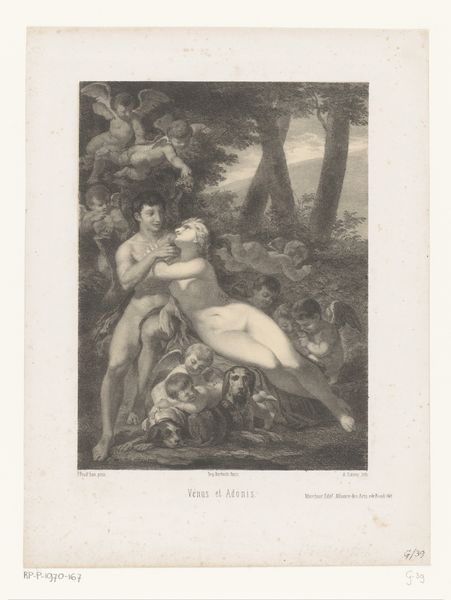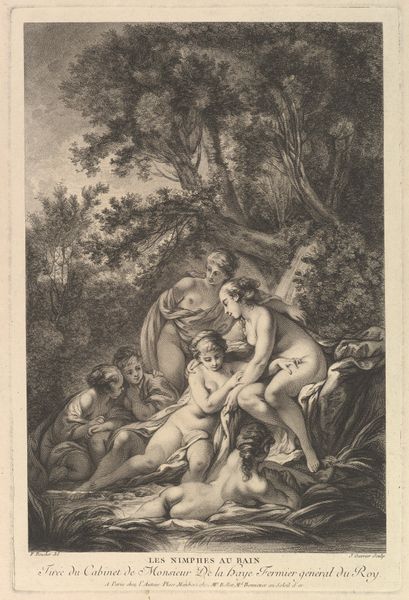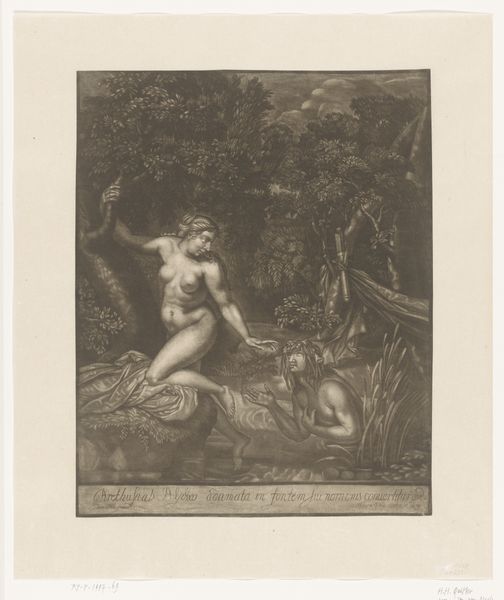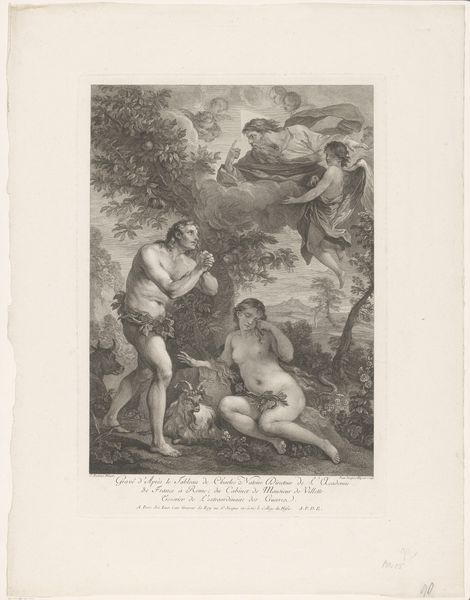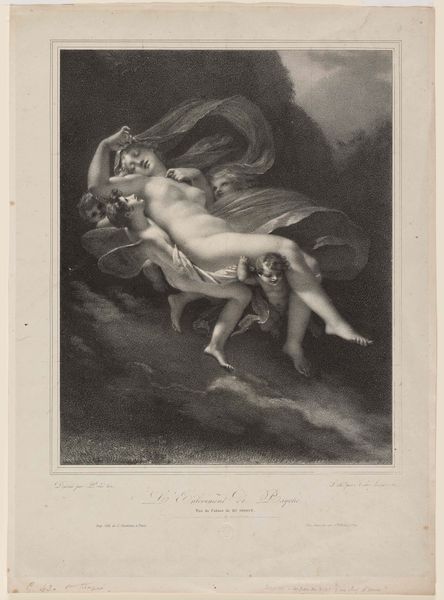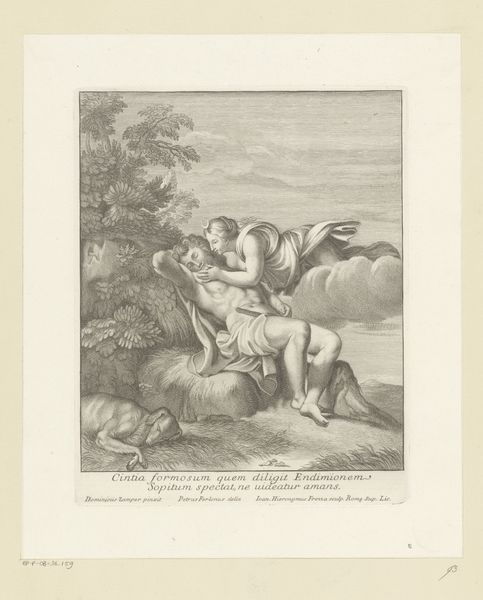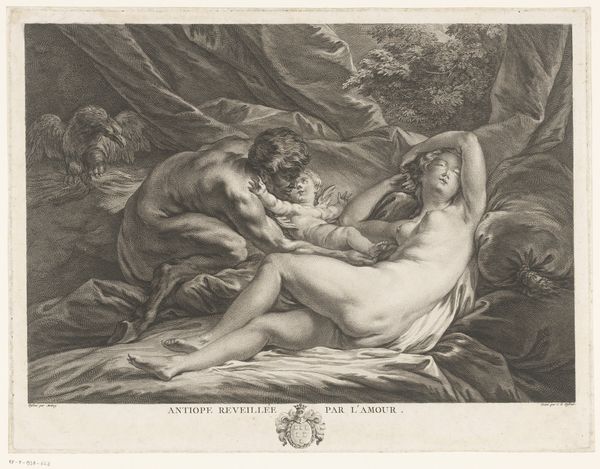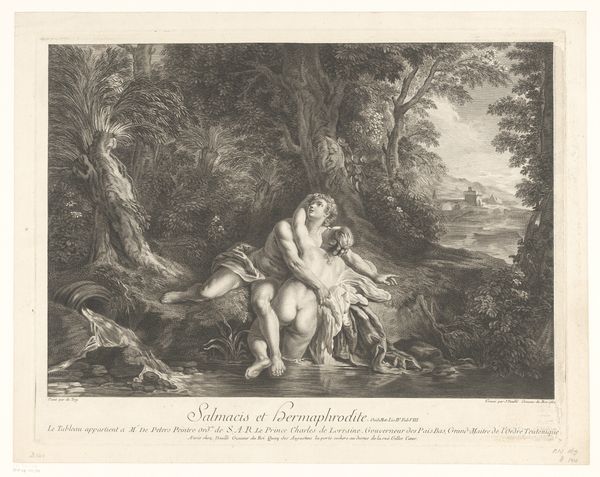
engraving
#
figuration
#
romanticism
#
history-painting
#
nude
#
engraving
Dimensions: height 438 mm, width 308 mm
Copyright: Rijks Museum: Open Domain
Curator: This engraving from 1845, "Venus and Adonis" by Julien-Léopold Boilly, depicts a famous scene from classical mythology. The rendering is quite striking. What's your initial take on this composition? Editor: A tad overdramatic, no? It's so...lush. You've got the smoldering looks, the nudes in a wood, cupids swarming – all in shades of gray! It feels like a soap opera written by someone who only read half of Ovid's *Metamorphoses*. Curator: The visual drama underscores a complex moment. Boilly engages with the tragic love story, contrasting divine beauty with mortal vulnerability, filtered through a Romantic lens. Note how Venus physically clings to Adonis, her expression caught between affection and a premonition of impending loss. Editor: The clinging is right, and her look…like she’s suddenly remembered she left the oven on back in Olympus. And all those babies-- are they supposed to represent love? Fertility? They look more like an impending childcare crisis to me. It's so overdone that the emotion somehow reads as synthetic. Curator: Remember that Romanticism was all about heightening emotion, delving into passion, even courting the sublime. And there is layered symbolism to appreciate, such as the presence of the hunting dogs, symbols of Adonis’s fate as a hunter... Editor: True, but these aren’t fierce hunting dogs. They look more like family pets. My old hound, Barnaby, looked more deadly when he was expecting a biscuit. Perhaps, this contributes to its quaintness? It almost feels...comical, with this overly grave tone, combined with all those extra details! Curator: It’s a tension that actually aligns with the era, between academic precision and emotional freedom. Romantic artists aimed to translate intense experiences onto paper, to provoke viewers, to transport them. Editor: Transport me it does. Mostly back to that dreadful Shakespeare class in college. Still, despite its melodrama, something about this slightly theatrical style captures an earlier time's particular view of emotion and story. It serves as a striking, peculiar window. Curator: A window into a past where drama played differently. I see echoes of a specific time—the yearnings and theatrical sensitivities of 19th-century artistic ideals and Romantic obsessions, framed by the timeless stories they attempted to capture.
Comments
No comments
Be the first to comment and join the conversation on the ultimate creative platform.
